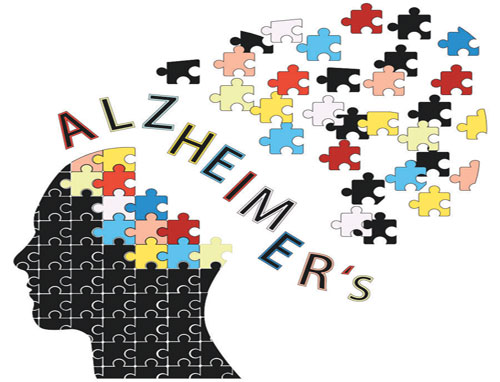What Was That I was Supposed to Remember?
No matter what your age, we all forget things “once in a while” such as where we put our glasses or an occasional task or appointment that we have to do. These once in a while oops are simply age-related memory loss. As we age, our brains lose some of their agility that they once had thereby impacting the brains’ functions will change as well. According to the Alzheimer’s Association, some examples of typical age-related changes are as follows:
- Making a bad decision once in a while
- Missing an occasional monthly payment
- Forgetting which day it is and remembering later
- Sometimes forgetting which word to use
- Losing things from time to time
According to a recent study conducted by the Institute of Medicine (IOM), Cognitive Aging: Progress in Understanding and Opportunities for Action, there are three actions which everyone can take to maintain their cognitive health and potentially reduce the effects of cognitive aging. Specifically, the committee recommends that individuals should
- Be physically and mentally active.
- Reduce and manage cardiovascular disease risk factors (including hypertension, diabetes, and avoid tobacco).
- Regularly discuss and review health conditions and medications that might influence cognitive health with a health care professional.
Both the Alzheimer’s Association and the IOM make the additional recommendations:
- Try to keep your weight within recommended guidelines
- Eat a healthy diet
- Stay socially connected
- Get enough sleep
*Image courtesy of Google Images
Alzheimer’s Disease Will Bankrupt America
Alzheimer’s disease will bankrupt the Unites States should a cure or a treatment for the disease delaying the onset of symptoms by 5 years not be found by 2025. Every 67 seconds someone develops the disease. Alzheimer’s disease is the 6th leading cause of death in the United States and the 5th leading cause of death for people 65 years of age and older. Our brains’ are the most important organ in our body. However, that being said, the average individual has a 10% chance of developing Alzheimer’s disease simply by virtue of having a brain. That risk factor increases to 20% should the individual have a parent or sibling who has or had the disease. Age is the biggest risk factor for developing the disease. 95% of all diagnosed Alzheimer disease cases are late onset, meaning the onset of the symptoms occur at 65 and above. According to the Alzheimer’s Association’s 2014 Facts and Figures, there are approximately 5.1 million Americans living with Alzheimer’s disease. 100,000 individuals living with the disease have young (early) on-set. Women are the epicenter of the disease with 3.1 million women currently living with the disease. Women have a 1 in 6 chance of developing this disease in their lifetime. Why the disparity? The simple answer is that women tend to live longer than men. The numbers of people developing this disease are growing exponentially as the baby boomers reach the age of 65. Current estimates project that 10,000 people are turning 65 daily. According to a report of the Alzheimer’s Association, Changing the Trajectory of Alzheimer’s Disease: How a Treatment by 2025 Saves Lives and Dollars these figures will triple to 13.5 million by 2050 if we fail to discover a cure or a treatment delaying the onset of symptoms.
Alzheimer’s disease is the most expensive disease in the country today. Total societal cost for caring for someone with this disease inclusive of Medicare/Medicaid funding and out of pocket spending is around $300 billion dollars. That breaks down to about $58,600 per patient this year. *See the Shriver report. The majority of the costs are borne by the family. Medicare & Medicaid will spend $153 billion dollars on Alzheimer’s this year. That translates to 1 out of every 5 Medicaid/Medicare dollars. The costs of care increases as the person progresses through the disease and requires greater and greater assistance. In the mild to moderate stage (Stage 1) costs are much lower because the person is still capable of handling a significant portion of their daily activities however by the end (severe) stage (Stage 3) the affected person is wholly dependent upon caregivers for everything. By 2050 there will be more people projected to be living in this 3rd and final stage of the disease than there are people currently living with the disease in 2015. In other words, by 2050 there will be in excess of 5.1 million Americans living in the final stages of this disease.
The APOE-Less Person
A small but growing number of genes have now been identified as impacting the chances of developing the most common form of Alzheimer’s, late onset Alzheimer’s. This form of Alzheimer’s typically develops after the age of 65. The effects of these genes are subtle, with variations acting to increase or decrease the risk of developing Alzheimer’s disease, but not directly to cause it. The gene with the greatest known influence on the risk of developing late onset Alzheimer’s disease is called apolipoprotein E (APOE). This gene is found on chromosome 19 and comes in three forms:
- APOE 2
- APOE3
- APOE4
We all have two copies of the APOE gene, which we inherit, one from each parent. These may be the same as each other or different. APOE4 has been shown to be the greatest genetic risk factor for developing late onset Alzheimer’s. This is due to the fact that protein made by APOE4 slows the process of clearing beta-amyloid buildup in the brain, leading to the accumulation of the amyloid plaques commonly associated with Alzheimer’s. The Alzheimer’s Association stresses that people with this gene may or may not develop the disease and conversely people who do not inherit this gene may still develop the disease. APOE2 on the other hand is the least common variant of the gene and appears to reduce the risk of developing the disease because their proteins clear plaques more quickly. APOE3 is the most commonly found variant of the gene and appears to have little to no impact on developing the disease.
A 40-year-old man is the first documented case of an APOE-less person. His brain health may hold the key for treatment and potentially a cure for Alzheimer’s disease. Doctors at the University of San Francisco posed the question of, does the absence of the APOE gene hurt the brain? The man in question suffers from a rare genetic disorder, dysbetalipoproteinemia, which causes cholesterol levels to soar so high in the body resulting in what appears to be pools of fatty tissue bubbling up under the skin. Apolipoprotein E, the protein made by the APOE gene, helps transport fats such as cholesterol and triglycerides around the body. In the brain, Apolipoprotein E, accompanies the cholesterol from neurons to a storage area while they are changing and then returns the cholesterol to neurons. In the study they found his brain size was unaffected, and the white matter was healthy. His thinking and memory skills were generally normal not withstanding the absence of APOE. This gives hope that reducing or eliminating the APOE4 from the brain can prevent the onset or potentially cure the disease.
Studies are currently taking place on the APOE2 variant y in an attempt to increase this in the brain as well as specifically on the use of a monoclonal antibody (A4 Study), which has been found to clear Amyloid Plaques from the brain and slow the cognitive decline in people who took the drug in the earliest stage of the disease.See http://monarcaresblog.com/2014/03/24/the-a4-trial-and-pet-scans-provide-hope/
*Image courtesy of Google Images
Have You Had The Ah Huh Moment?
Family caregiving is often all-consuming, impacting how we interact with others and how we view the world. The reality is, depending on your age, your inner circle of friends and neighbors as well as extended family members have probably never been in your position and are clueless as to what your life is like. We become consumed with the thought that no one could possibly understand what we are going through and rather than freely expressing or communicating our fears, frustrations and exhaustion which would take what precious time we incorrectly feel we do not have we begin to develop frustration towards those we care most deeply for. It is easy to get short-tempered with those around you out of frustration but the fact is, your shooting yourself in the foot by doing so. Taking your aggression out on those you love and admire simply distances you from them at a time when you really could use a friend the most. Ever watch a boxing match?t At the moment a boxer gets really tired, he or she will grab hold of their opponent in a bear hug of sorts in order to catch their breath as well as to ward off future blows. That is a pretty good lesson for caregivers. When you are at your wit’s end and want to rant and scream, rather than scream or say something harmful to those in your inner circle, tell them you need a hug or simply grab them and do so. Doesn’t matter that you have no energy to talk, just hug them. Do deep diaphragmatic breathing through your nose while doing so. This will relax you, as well as soothe you. Will you still potentially face the same issues the next day which frustrated you in the first place, probably, but you will be so much more relaxed.
According to psychologist Matthew Hertenstein, PhD, director of the Touch and Emotion Lab at DePauw University, “Stimulating touch receptors under the skin can lower blood pressure and cortisol levels, effectively reducing stress.” Furthermore, a study from the University of North Carolina found that women who hugged their spouse or partner frequently (even for just 20 seconds) had lower blood pressure, possibly because a warm embrace increases oxytocin levels in the brain. Over time, lower blood pressure may decrease a person’s risk for heart disease.
*Image courtesy of Google Images
Be Optimistic
Sammy Cahn’s beloved song High Hopes tells the story of an ant whose optimism/high hopes convinces him that he could move a rubber tree plant. Regardless of whether that is physically a possibility, research suggests that having a positive attitude toward life is not only heart healthy but good for your brain as well. A 15-year study of post-menopausal women conducted by the Pittsburgh School of Medicine found that pessimistic women were more likely to have high cholesterol, diabetes, high blood pressure and die of heart disease than non-cynical menopausal women.
More recently, an 8-year study published on May 28th, 2014, in the Journal of Neurology by researchers from the University of Eastern Finland, found that individuals who were pessimistic, had three- times greater risk of developing dementia than those that were optimistic. The reasons for their results have not been conclusively found but one possible theory is that people who are pessimistic/cynical tend to have higher levels of inflammation in their bodies and since Alzheimer’s disease and other forms of dementia are inflammatory diseases this may be a connection.
Here are a few ideas to turn your half empty glass to one that is half full:
- Keep a sense of humor. Make a date with a friend or your spouse to see a favorite comedian or rent a funny movie. Look for humor in everyday situations. Laughing is one of the most effective coping mechanisms and can be one of your greatest allies in turning that frown upside down.
- Take time for yourself. Take the time to eat right, get adequate rest and exercise daily. Remember, “All work and no play makes Jack a dull boy.” Neglecting yourself will only increase frustration.
- Go with the flow. Being flexible means being able to roll with the punches and understanding you won’t always be able to do the things you plan and want to do at the precise times you plan or want to do them. Be realistic and know your limits.
- Say No. Know when to listen to your inner voice telling you that you can not do everything and be everything for everyone else.
- Express your feelings. Don’t bottle everything up inside you. People are not mind readers. Tell them when you are frustrated and upset.
- Communicate better. Do not bark or shout. Choose your words with an aim of conveying what you want in a positive manner.
- Listen to music. Let music soothe your inner savage beast. Dance to your favorite tunes, play air guitar or conduct an imaginary orchestra.
- Take a walk. Get outside and smell the roses. There is so much to be grateful for in this life. See the beauty of everyday.
- Breathe. Don’t hold your breathe. Practice deep diaphragmatic breathing. Try meditating or yoga.
- Take a bath, shower or go for a swim. Let the water wash away the day.
*Image Courtesy of Google Images
A State Plan For Alzheimer’s
Is your state a a dementia capable state? According to a study released by the New England Journal of Medicine, Alzheimer’s disease is the most expensive disease in America surpassing both cancer and heart disease with costs expected to skyrocket within the next few years. It is the only cause of death among the top 10 in America without a way to prevent it, cure it or even slow its progression. 1 out of every 5 Medicaid dollars is spent on a person with Alzheimer’s. Because this is a growing public health crisis, 36 states have published a state Alzheimer’s plan and another 8 states are currently developing a plan.
State plans create the infrastructure and accountability necessary to confront impact of this disease with a coordinated and comprehensive approach. State plan recommendations illicit government , community and private sector responses to the growing Alzheimer’s disease and related dementias throughout the United States. This can include the development of standards for an Alzheimer’s home health/ home care providers as well as for memory care and skilled nursing facilities; provider education on early detection of dementia, evaluation and availability of community resources; training for first responders, law enforcement and so forth.
Monarcares is based in North Carolina. Unfortunately our state does not have a plan. According to the Alzheimer’s Association, North Carolina has approximately 150,00o citizens living with the disease, however this figure is most likely higher because the figure only accounts for those people who have been diagnosed with and whose diagnosis has been documented in their medical records. Currently there are nearly 442,000 family caregivers in North Carolina providing over $5 million in unpaid care for their loved ones with the disease. The Association estimates that 40% of family caregivers are employed full or part-time and that among that group 66% have reported having to work late, leave early or take time off due to caregiver demands. Additionally nearly 15% of these caregivers live an hour or more away from their loved ones and as a result have out-of-pocket expenses nearly twice as high compared with local caregivers. Now factor in the physical and emotional toll of Alzheimer’s and dementia caregiving. More than one-third report symptoms of depression and 60% of all Alzheimer’s and dementia caregivers rate their stress level as very high. This in turn leads these caregivers to incur additional health care costs of their own.
What can you do if you live in a state without a comprehensive plan? Contact your state senators and representatives and request a joint legislative study committee that will specifically focus on developing a state Alzheimer’s disease plan. Given the sweeping economic, social and psychological impact of this disease states need to take a proactive approach to this issue and the best way they can do this is to develop a state plan.
* Image courtesy of Google images
What Toxic Chemicals Are You Exposed To Daily?
 According to the American Cancer Society, breast cancer is the most common form of cancer among women in the United States as well as the leading cause of death among women who are in their late 30s through their 50s. In a recent joint study conducted by Harvard School of Public Health and the Silent Spring Institute, scientists were able to identify chemicals found in everyday life from household cleaning products to car exhaust fumes which they proved caused breast cancer in rats.
According to the American Cancer Society, breast cancer is the most common form of cancer among women in the United States as well as the leading cause of death among women who are in their late 30s through their 50s. In a recent joint study conducted by Harvard School of Public Health and the Silent Spring Institute, scientists were able to identify chemicals found in everyday life from household cleaning products to car exhaust fumes which they proved caused breast cancer in rats.
As a result of this study, they suggest women limit exposure to the following chemicals:
- Butadiene- a chemical found in tobacco smoke, gasoline fumes and auto exhaust;
- Acrylamide- can be found in starchy foods such as french fries as well as in foods cooked at high temperatures;
- Aromatic Amines- found in polyurethane foams and sealants, pesticides and some dyes;
- Benzene- which can be found in gasoline fumes, auto exhaust, air pollution and tobacco smoke;
- MX- drinking water disinfectant
- Nitro-Pahs-A common air pollutant caused by diesel exhaust;
- Acrylamide, ochratoxin A, styrene and Heterocyclic Amines found in charred food, drinking water and meat cooked at high temperatures;
- Commercial grade flame retardents and flame retardant metabolites such as in polyester resins, plastic polymers and rigid polyurethane foams;
- PFCs used in products which resist heat, oil, stains, grease and water.
- Ethylene and propylene oxide which is a gas used to sterilize medical equipment, food and spices, clothing and musical instruments;
- Methylene chloride and halogenated organic solvents
which used to be commonly used in dry cleaning; paint and spot removers; food processing and hair spray.
*Image Courtesy of Google Images
Clogged Arteries and The Brain
Asymptomatic carotid stenosis (ACS) is a blockage of the carotid arteries caused by fatty plaques cutting off oxygen to the brain. ACS can potentially lead to a stroke or a transient ischemic attack (a mini stroke). Researchers from Baltimore VA Medical Center and the University of Maryland School of Medicine, sought out to find what impact if any ACS could have on memory, learning and cognitive functioning. Of the 67 people tested with ACS all performed poorly on the ability to make decisions, memory and processing speed.
Preventing such blockages are relatively easy. The key is to become heart healthy. This can be accomplished by focusing on what the American Heart Association calls Life’s Simple 7.
Life’s Simple 7 are:
- No smoking;
- Lose weight/maintain healthy weight;
- Eat a heart healthy diet;
- Be active;
- Control blood pressure;
- Control cholesterol;
- Reduce blood sugar;
Have annual checkups making sure to have your cholesterol and blood pressure checked. Exercise daily.
*Image courtesy of Google Images
Alzheimer’s and its Impact on Women
This past week, marked the Alzheimer’s Association’s Advocacy Forum, which was held in our nation’s capital, Washington, D.C. The cherry blossoms just budding, perfectly matched the optimism of all 900 plus advocates who attended the forum from around the country. Alzheimer’s disease is an epidemic and as the 10th leading cause of death in this country, according to the Centers for Disease Control (CDC), it can not be prevented, cured or even stalled in its progression. Recently, the Alzheimer’s Association released its 2014 Facts and Figures and the results are stunning. Nearly two-thirds of those living with Alzheimer’s disease in the United States, of which more than 5 million are suffering, are women (3.2 million, about 16%). What makes these stats even more shocking is the fact that there are 2.5 more women than men who provide on duty care, 24-hours a day, for someone with Alzheimer’s. You do not need to be a feminist to say, what on earth? The numbers are facts. 1 in 6 women over the age of 60 will either die of or with Alzheimer’s disease. Regardless of the reason of the disparity of rates, this disease is insidious and it is essential that a cure is found now.
*Image Courtesy of Google Images
The A4 Trial and PET Scans Provide HOPE
Finding a cure for Alzheimer’s disease is a race that we can not afford to lose. For several years now, the NIH and Alzheimer’s Association have been pushing for a new diagnostic category, something called preclinical Alzheimer’s. People with this diagnosis wouldn’t have problems with memory or thinking. Their brains however would evidence Alzheimer’s related brain changes in the form of amyloid plaques and tau tangles commonly associated with Alzheimer’s and which scientists now know actually form in the brain 10-15 years before symptoms of the disease begin. According to the Alzheimer’s Association, anyone can develop this disease because everyone carries the risk factor by simply having a brain. A very scary fact indeed.
What difference would an early diagnosis matter if the disease has no cure? Early detection could result in earlier treatment and stave off the symptoms longer and afford their family time to plan for the future, make living arrangements, take care of financial and legal matters and develop support networks. There is currently hope for a future without Alzheimer’s in form of the PET scan (Positron Emission Tomography) that can help in the early detection of those factors and in the form of an exciting clinical trial called the A4 trial. A4 is a double-blind, three-year trial of 10,000 people, taking place at 60 centers across the country. All 10,000 participants must have PET Scans, which the centers administer free of charge (Medicare does not currently cover the costs of this test) and which conclusively show brain changes. Those participants will then be given a placebo or monoclonal antibody, which has been found to clear Amyloid Plaques from the brain and slow the cognitive decline in people who took the drug in the earliest stage of the disease. If you or a loved is 65 years of age or older and have no apparent cognitive or memory decline and would like to participate in the study, go to http://www.adcs.org/Studies/A4.aspx to enroll.
- http://monarcaresblog.com/2014/03/10/hope-for-alzheimers-act/
- http://blog.alz.org/a-year-in-review/
*Image courtesy of Google images









